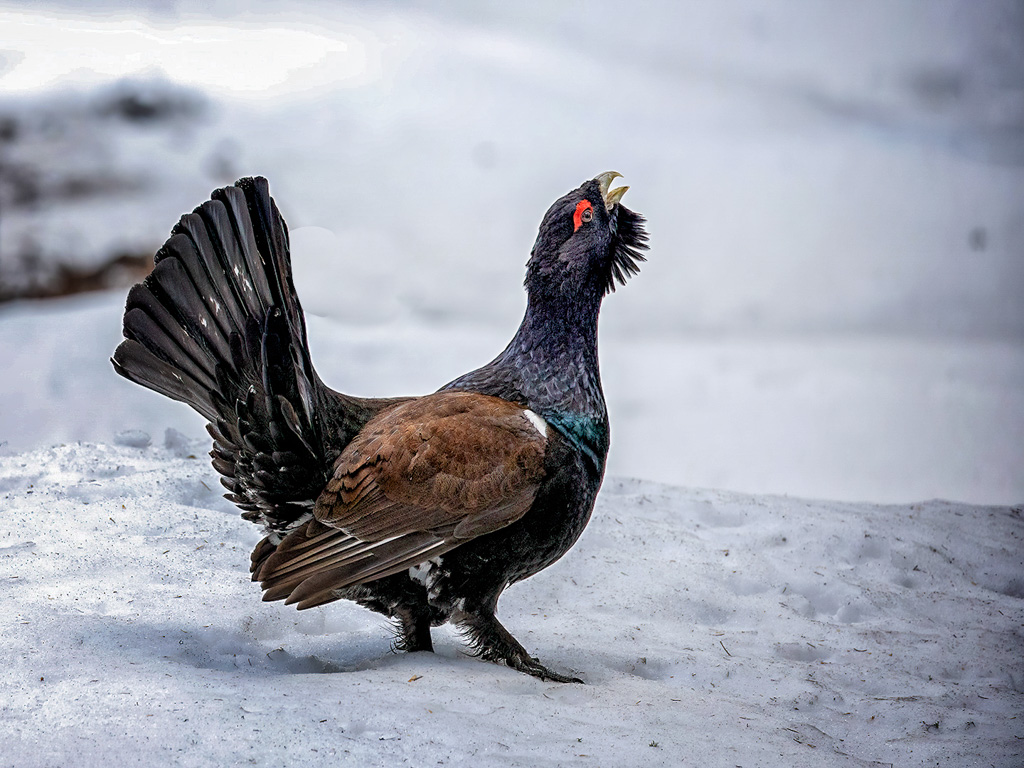Dr Ernoe Barsi
About the Image(s)
The bird is a male Western Capercaillie. I made this picture in the
Hargita mountains in Transsylvania (Romania). The male was turning
around and was wooing the females.
The camera body is Canon EOS R6, lens Canon R 100-500 L IS USM. In Adobe
Lightroom I made crop, black clipping, in background exposure
adjustment, black, texture, sharpness, dehaze adjustments, in subject
black, exposure, texture, grain, sharpness, defringe adjustments
13 comments posted
I love this! It made me smile. I want to come up with a clever caption. Posted: 11/05/2024 23:21:30
Thanks Sylvia! Posted: 11/16/2024 16:16:53
Thank you for sharing your thoughts on the development process. This version of the photo was made to allaign with the regulations of a competition.FIAP rules states that removing any elements from the original pictures is not permitted. Posted: 11/12/2024 16:24:22
I understand, every time I submit a contest picture, I read the rules and with them in mind start over from a raw photograph. Posted: 11/12/2024 16:43:21
Enro - I thought the subject needed to be brightened so I opened the shadow and highlighted its eye - I also removed some messiness in the upper right and added quite a bit of contrast as I thought you needed a bit more detail in the snow. I left the object in the upper left purposely because without it, the image lacked depth. Posted: 11/10/2024 12:40:28
Thank you Butch for trying to improve my picture! The bird looks more detailed. But your version will also highlite the pine needles in the snow and as a result it won't look aesthetic. The light in the background will draw the viewer's attention away from the bird. Posted: 11/16/2024 15:44:22
Good capture and story! I agree that the brightening of the subject helps to bring out the detail in the bird. Posted: 11/10/2024 14:48:08
Thank you Julia! Posted: 11/16/2024 15:45:20
I'm still searching for years for a shot like this - if winter or summer: in vain. Too seldom in this region.
Great shot, congrats!
Butchs version show more color, but is does not seem natural. It's hard to bring in the full color on a white background. Probably you can brighten the bird up a little bit? Posted: 11/11/2024 08:10:07
Great shot, congrats!
Butchs version show more color, but is does not seem natural. It's hard to bring in the full color on a white background. Probably you can brighten the bird up a little bit? Posted: 11/11/2024 08:10:07
Dear Peter! The best time to make photos of the western capercaillie is when they are in the lekking period (near the end of april). You must sit in the hunting blind when its nearing dawn. If the bird sees you, it will fly away. You can find phototours by Sakertour (https://www.sakertour.com/hide-photography/romania-photo-tours/bears-and-birds-photography-in-transylvania-tour/) Posted: 11/16/2024 16:14:09
The Western Capercaillie exudes confidence ~ I'm sure the females were impressed! :) I agree with lightening the subject a bit to bring out more detail, otherwise it's perfect! Posted: 11/11/2024 19:31:55
Thank You Kathleen! Posted: 11/16/2024 16:16:04
